The correct information at the right time is crucial, especially in healthcare. Yes, tools help you streamline communication, but with so many types of tools out there, how do you choose one that aligns with your healthcare facility's needs?
We know it can get overwhelming. But don’t worry, we’ve got you.
This blog discusses the top 5 healthcare communication solutions to help elevate patient and staff experience. Read ahead to know what they are!
1. RingCentral
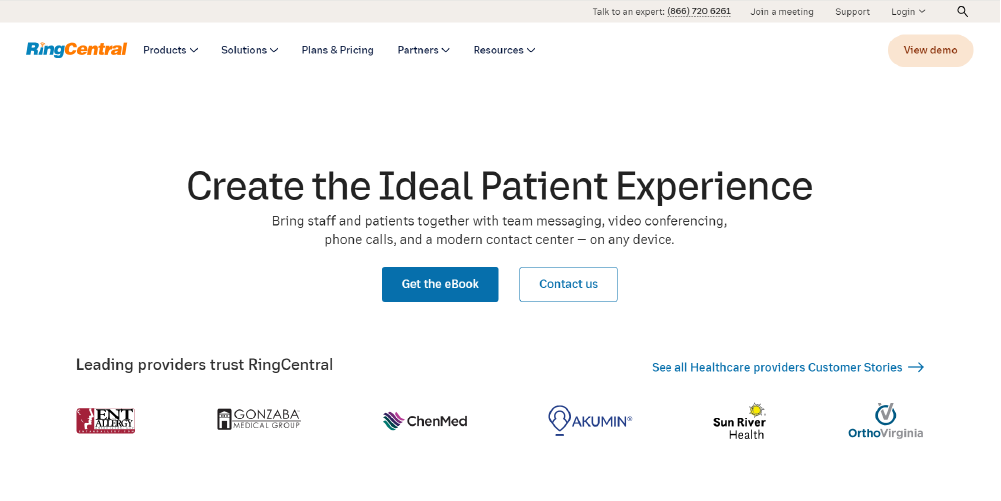
RingCentral is a cloud-based healthcare communications solution. It facilitates seamless communication between healthcare providers and patients via messages, audio, and video conference tools —- powering virtual healthcare delivery across locations and time zones.
Product: Cloud-based phone system.
Use cases:
- Virtual care delivery: RingCentral lets patients meet their doctors over a secure web browser for virtual (audio/video) appointments. This is super convenient for patients who live far away, have busy schedules, or have mobility issues.
- Automated reminders: In today’s busy world, reminders are efficient problem-solvers for reducing no-shows and missed appointments. With RingCentral, you can send reminders close to the appointment day and time and share follow-up notifications as needed.
- Streamline call queues: RingCentral’s interactive voice response (IVR) helps connect patients to the right department. This reduces the tedious task of manually managing call queues for faster patient-to-support contact.
2. L Squared
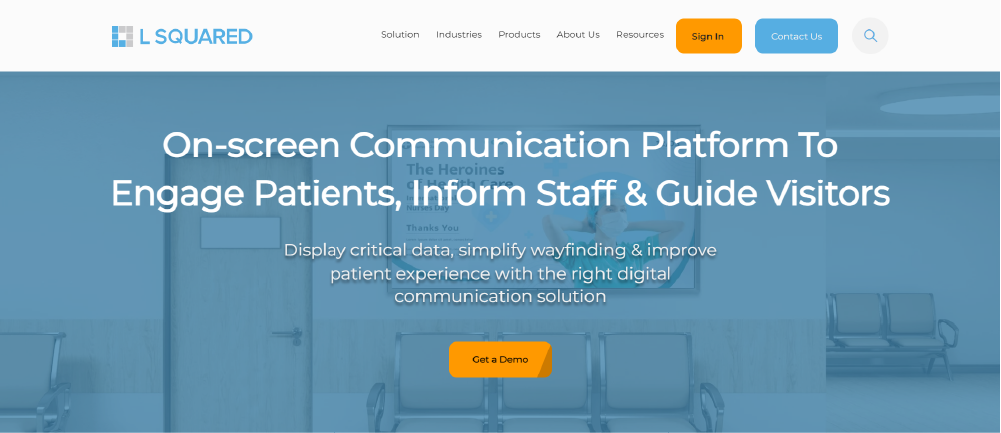
L Squared is a turnkey digital communication solution for healthcare. It elevates patient experience with real-time communication so your staff and patients are always up-to-date. Hospitals and clinics can use cutting-edge healthcare displays to share real-time updates, manage queues, and streamline wayfinding through dynamic displays.
Product: Digital signage solution for healthcare communications.
Use cases:
- Share real-time relevant information: Legacy communication systems are clunky and hold your staff back. With signage solutions like L Squared, you can share real-time updates with staff to keep them informed at all times. These include staff schedules, patient profiles, best practices, and emergency messages in case of security threats and natural disasters.
- Simplify wayfinding: Finding the right room around hospitals can get overwhelming. They add to existing patient anxiety.
Digital communication can help fix this. Using interactive kiosks, you can help patients find the right rooms and landmarks with ease. Additionally, you can display floor layout on large screens to help your patients and staff locate doctor rooms, labs, cafeterias, and more easily.
- Reducing perceived wait times: Occupied time feels shorter than unoccupied time. We didn’t say this; psychology did. By displaying live wait times in patient waiting rooms, you help ease patient anxiety by relieving them of uninformed, restless waiting.
- Streamline queue management: To avoid crowding and congestion, you can display QR codes on displays near entrances and nurse stations to allow customers to self-register and speed up the process. Additionally, you can manage queues more efficiently by displaying next-in-line information on displays to disperse crowds. It’s a healthcare communications solution that just works!
3. Kloud 7
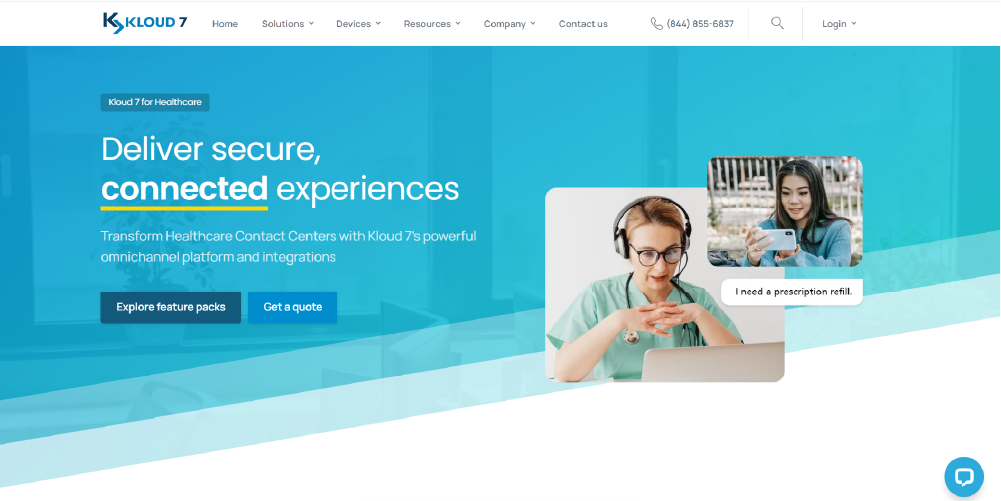
Kloud 7 is a one-cloud phone system that helps healthcare contact centers deliver an omnichannel customer experience. It allows support teams to collaborate, communicate, and connect with healthcare customers through one unified system.
Product: One-cloud phone system.
Use cases:
- Intelligent routing: Kloud 7 uses creative interactive voice response (IVR) and smart routing that detects keywords to connect patients with the right healthcare staff. It’s a great healthcare communications solution for on-the-phone support.
- Sentiment analysis: Here, advanced AI is used to detect negative moods in patients to offer quick and contextual resolutions. For instance, you can use it toward public safety on the phone in case of emergencies.
- Problem escalation: Customers often contact support teams as a last resort. By this time, they’re frustrated and angry (in worse-case scenarios.) And the longer you keep them on hold, the higher their frustration.
Features like automatic call distribution (ACD) help reduce call volume traffic to connect callers with the right support agent. With CRM integrations, you ensure that agents get access to the caller’s historical healthcare data to deliver personalized and contextual resolution.
4. OnPage
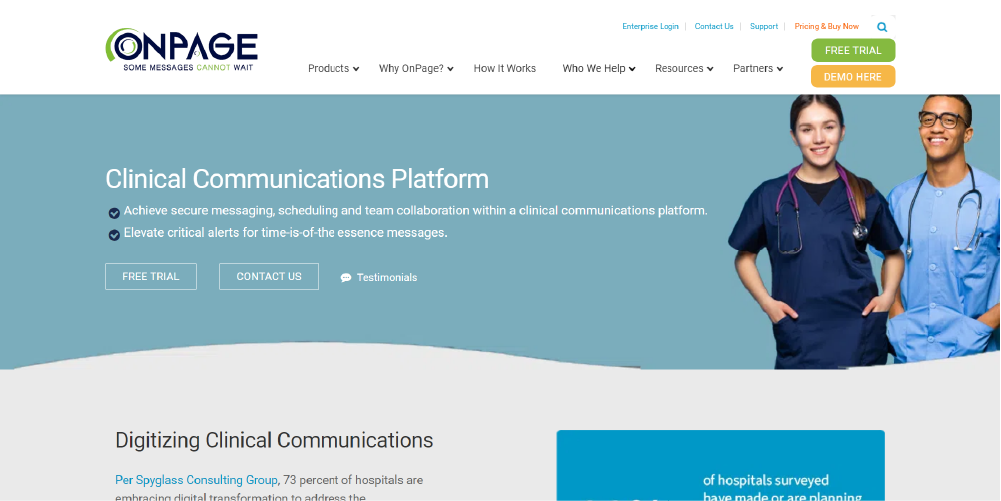
OnPage is a clinical communications platform that helps healthcare providers communicate, schedule meetings, and collaborate seamlessly. It’s best used to elevate critical, high-priority messages in urgent scenarios.
Product: Clinical communications platform.
Use cases:
- Active response: OnPage helps healthcare facilities improve care quality with accountable and quick responses to medical cases. It also allows managers to set up fail-safe schedules and escalate urgent cases through the in-built scheduler. This ensures that priority messages rise above others for visibility and prompt response.
- Historical and real-time reports: These insights estimate doctors’ on-call workload so care managers can allocate upcoming incidents optimally. This keeps your clinic and hospital organized, ensures patients get quality care, and prevents medical staff burnout.
5. Celo
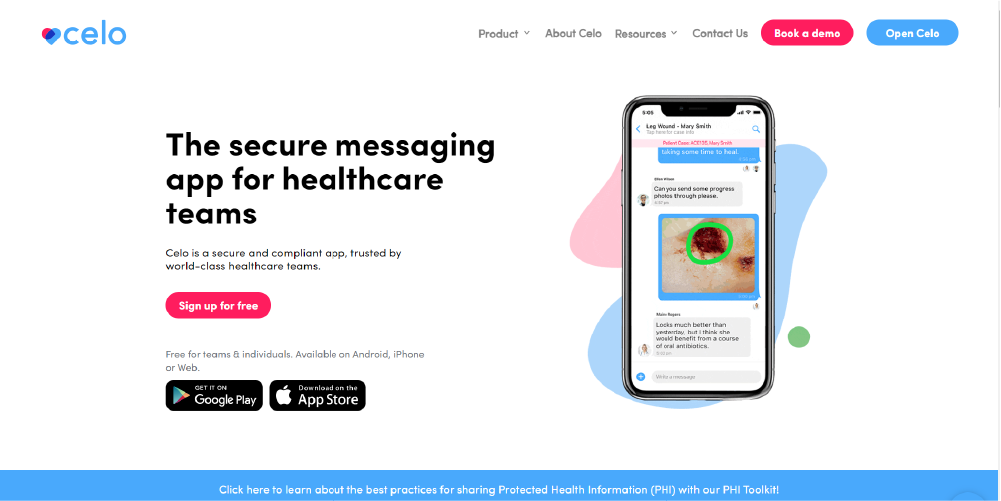
Celo Health is a messaging app for healthcare teams. Built by clinicians, it’s a safe and secure way for patients to interact with their doctors from anywhere. But it’s more than your typical healthcare communications solution! It also acts as a networking app to help doctors connect with their colleagues and peers.
Product: Messaging platform for healthcare.
Use cases:
- Compliant communication: This platform ensures safe, HIPAA-compliant messaging for sensitive patient information. Patients and doctors can share health records, medical histories, and more without worrying about information leaks.
- Healthcare network: Besides one-on-one patient communication, it also acts as a networking platform for medical professionals to connect with colleagues either personally or in group chats.
- Secure library: Celo also provides a one-stop library of patient imagery like photos and videos, separate from your camera for privacy and storage issues.
On to you!
This concludes our list of the top 5 healthcare communications solutions.
Remember to customize your tech stack to your unique goals. Choosing the right tool is not just about being tech savvy - it’s a smart and strategic business decision. That’s why what works for one business may not do the trick for yours.
After all, the right tools can enhance operations and streamline healthcare communications exponentially. But the wrong ones can slow you down and burn a hole in your pocket.
So dive in, explore, and equip your facility with the communication arsenal that fits your unique needs. Your patients will thank you, and so will your staff!



